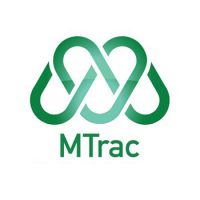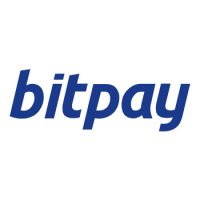Blockchain
Report Highlights The Dawn of Thailand’s e-Payment Era

The rapid development of Thailand’s e-Payment landscape has made it an essential part of modern Thai life, allowing unbounded global commerce and accommodating the rise of the “New Normal” during the COVID-19 crisis, while setting the scene for the Kingdom to steadily evolve into a “cashless society,” according to a report published on the Thailand NOW website.
The advances are the result of careful planning and development over the past six years of the rollout of financial technology services and systems, the report said. That level of preparation allowed the country to be ready to implement solutions needed when the arrival COVID-19 accelerated the adoption of technology by Thai consumers.
Thailand’s move towards e-Payment has been driven by the National e-Payment Master Plan, which was launched in 2015 with the aim to transition the Kingdom to a digital economy and to bring economic progress for all in the country.
The plan’s five core elements are the PromptPay system, launched in 2016 to allow real time transactions to take place using national ID or phone numbers; the multiplication of EDC networks and tools that eliminate the need for cash; the digitization of the tax system; the establishment of a state e-Payment system for efficient welfare distribution, and the promotion of electronic payment systems.
E-Payments are overseen by the Bank of Thailand, the country’s central bank, supports the National e-Payment Master Plan with its own Payment Systems Roadmap, which states, “Digital Payment is to be the most preferred choice in efficient, safe, low-cost payment systems that meets users’ needs.”
Arguably the greatest boost to e-Payment has been the proliferation of smart mobile phones, which placed access to fintech and digital money services in the pockets of everyday people. Further driving e-Payment has been the advent of the Quick Response (QR) code, a system invented in Japan in 1994, that allows for actionable data to be read by smartphones. Harnessing QR codes for e-Payment was spearheaded by Chinese e-commerce and social media giants Alibaba and WeChat and led to their popularity throughout Asia, the report said.
The mobile banking applications, that streamlined the myriad of financial services into safe and user-friendly interfaces, have all but replaced traditional in-person banking and pushed e-Payment into the Thai mainstream. The mobile banking apps, first introduced by Kasikornbank in 2010, then by Krungthai Bank and Siam Commercial Bank in 2012, had initially limited functionalities, but they have now effectively set the stage for Thailand’s present e-Payment landscape.
Users quickly started to adopt these new tools. Just one year after its launch, the PromptPay system had logged over 718 million transactions and, by December 2018, counted 46.5 million users, over half the country’s population, the report said, citing the National e-Payment Committee assessment.
Overall, electronic transactions rose from a share of 15.9% of the nation’s GDP in 2010 to 24.2% in 2019, according to Bank of Thailand data.
All of these developments proved especially valuable when the COVID-19 crisis started in early 2020, the report said.
Needing to distribute aid nationwide while maintaining social distancing, the Thai government was able to use the e-Payment infrastructure provided by programs such as PromptPay to effectively carry out its social services.
Using the e-wallet Pao Tang app, assistance programs Rao Chana and Mor 33 Rao Rak Gun provided direct monthly payouts to those in need during the pandemic. The Co-Pay program saw the government pay for half of purchases made by users who simply had to make their payments via the Pao Tang app, which also supports Ying Chai Ying Dai, another Government program, granting vouchers in users’ apps to stimulate commerce.
Furthermore, the “New Normal” realities of remote working and learning, food delivery, and online shopping affirmed the need for e-Payment as an element of app-based services, the report said.
Food delivery services provided in Thailand by operators such as Grab Food, Line Man, and Food Panda saw a massive jump once COVID-19 hampered dine-in eateries and necessitated contactless living, with food orders skyrocketing 100-300%, the report said, citing a United States Department of Agriculture report.
Conditions imposed by the pandemic even played a part in establishing Thailand’s first unicorn, e-commerce service provider Flash Group, which announced in June 2021 it had reached a valuation of over US$1 billion, as online retail soared due to COVID-19.
The development of Thailand’s digital economy e-Payment involves cooperation with regional partners, and the central bank has moved to establish cross border arrangements with its counterparts in Malaysia and Singapore to facilitate retail e-Payment transactions for consumers and businesses in Thailand with their counterparts in both countries.
Also, in a forward-looking initiative, the Bank of Thailand has since 2019 worked on a joint research project with the Hong Kong Monetary Authority, regarding the development of central bank digital currencies (CBDC) and block-chain technology.
More broadly, the supply chain and logistics sector is seeing exciting developments in blockchain adoption for greater transparency, traceability, and automation in the production cycle. For instance, the International Organization for Migration (IOM) has partnered with impact tech firm Diginex Solutions to better protect migrant workers in Thailand’s garment industry using labour management facilitated by blockchain technology.
This ultimately benefits companies looking to improve their ESG disclosure as well as investors wishing to build socially responsible portfolios, which are known to out-perform the market.
All combined, e-Payment thoroughly deserves the attention and support it is receiving in Thailand, offering ease and financial empowerment to individuals and a world of potential for businesses at the national and regional levels, the report concluded.
SOURCE Thailand NOW
Blockchain
Blocks & Headlines: Today in Blockchain – May 16, 2025

A Pivotal Moment for Blockchain’s Many Frontiers
Today’s briefing arrives at a crossroads in blockchain’s evolution. From AI-driven Layer-1 grant programs to gamified resets in Web3, from supply-chain trust revolutions to exchange-driven token incentives, and high-stakes regulatory leadership shifts, the industry is charting new territory on multiple fronts. As builders, investors, and policymakers navigate this shifting terrain, five stories stand out for their potential to reshape blockchain’s trajectory:
-
Lightchain Protocol AI unveils a $150,000 developer grant program to onboard top builders in AI × blockchain.
-
Blockchain gaming experiences its lowest engagement of 2025, signaling a sector reset toward sustainability.
-
Norwegian Seafood Council research highlights blockchain’s trust-building power in global supply chains.
-
MEXC Exchange announces the Einstein (EIN) listing on July 20, 2025, buoyed by a $50 million rewards event.
-
Summer Mersinger, a US CFTC commissioner, is tapped as CEO of the Blockchain Association, marking a pivotal regulatory turn.
In this op-ed–style briefing, we’ll unpack each development, explore its implications for blockchain, cryptocurrency, Web3, DeFi, and NFTs, and assess how these narratives intersect to define today’s momentum.
1. Lightchain Protocol AI’s $150K Grant: Catalyzing Decentralized Intelligence
What happened: On May 15, 2025, Lightchain Protocol AI—a Layer-1 blockchain optimized for AI workloads—launched its Developer Grant & Ecosystem Incentive Program, pledging up to $150,000 in total funding to on-board teams building dApps, explorers, wallets, analytics dashboards, DeFi protocols, NFT platforms, and AI-powered modules on its network. Grants are milestone-based (up to $5,000 per milestone), accompanied by technical support, co-marketing, and ecosystem visibility. Source: Bitcoin News
Why it matters: Lightchain’s move underscores the growing fusion of AI and blockchain. By allocating resources to builders at the intersection of these technologies, the protocol signals that the next wave of innovation will hinge on intelligent smart contracts, federated learning coordination, and on-chain decision-making. For developers, this grant lowers barriers to entry and emphasizes sustainable, value-driven growth over token speculation.
> “We’re seeking impactful projects that align with Lightchain AI’s goal of bridging AI and blockchain—everything from AI prediction markets to compute marketplaces.” > — Lightchain Protocol AI Core Team
Implications:
-
DeFi & NFTs: Expect AI-augmented lending protocols and NFT platforms with dynamic metadata driven by on-chain models.
-
Ecosystem Growth: Lightchain’s aggressive grant strategy may spur competitors (e.g., Ethereum layer-2s) to bolster their own builder incentives.
-
Governance & Sustainability: The milestone-based approach aligns funding with tangible progress, a model DeFi DAOs may increasingly adopt for resource allocation.
Source: Bitcoin News
2. Blockchain Gaming’s 2025 Low: A “Reset” Toward Quality
What happened: According to Crypto.news, blockchain gaming saw daily active wallets dip to 4.8 million in April 2025—a 10% month-over-month decline and the lowest point of the year for Web3 gaming. Share of the DApp ecosystem for gaming fell to 21%, now tied with DeFi, while AI projects surged to 16% of on-chain activity. Funding also plunged nearly 70% from March to $21 million in April, though Arbitrum Gaming Ventures deployed $10 million from its $200 million fund to support titles like Wildcard, XAI Network, and Proof of Play. Source: Crypto.news
> “Capital is harder to secure, but that’s not necessarily bad. Weak projects are falling away, and funds are flowing into builders laying the groundwork for the next generation of blockchain games.” > — Sara Gherghelas, DappRadar Analyst
Why it matters: The downturn reflects a market recalibration from token-centric models toward user engagement, game mechanics, and interoperability—key for mainstream adoption. High-profile missteps (e.g., Square Enix shelving Symbiogenesis, Sega’s experimental launch of KAI: Battle of Three Kingdoms) contrast with enduring partnerships like Ubisoft + Immutable’s Might & Magic card game.
Implications:
-
DeFi and Gaming Convergence: As DeFi’s share remains steady, expect crossover innovations (e.g., on-chain staking integrated into gameplay).
-
Investor Focus: Sustainable tokenomics over ‘yin-yang’ hype; capital will favor projects with robust retention metrics and revenue models.
-
NFT Utility: Gaming’s reset may accelerate evolution of NFTs beyond collectibles into dynamic, utility-driven assets.
Source: Crypto.news
3. Deepening Trust in Seafood with Blockchain Transparency
What happened: Perishable News reported on May 15, 2025, that the Norwegian Seafood Council found 89% of consumers desire more information on seafood sourcing. Producers are piloting decentralized blockchain solutions to trace products “sea to shop floor,” sharing immutable data on species, harvest location, handling, and quality checks to reassure ethically conscious buyers. Source: Perishable News
Why it matters: While most blockchain discourse orbits finance and gaming, supply-chain applications represent a mass-market use case for Web3. Immutable provenance data combats fraud, illegal fishing, and mislabelling—an urgent concern as global seafood consumption climbs.
Implications:
-
Consumer Engagement: Brands adopting on-chain traceability can premium-price products by verifying sustainability standards, fair labor practices, and environmental impact.
-
DeFi Integration: Tokenized incentives could reward ethical producers or create staking mechanisms for supply-chain stakeholders.
-
Broader Web3 Adoption: Success in seafood may catalyze blockchain tracking in agriculture, pharmaceuticals, and luxury goods.
Source: Perishable News
4. MEXC’s Einstein (EIN) Listing & $50 Million Rewards Event
What happened: PR Newswire announced on May 16, 2025, that MEXC, a leading global crypto exchange, will list the Einstein (EIN) token on July 20, 2025 (UTC). To celebrate, MEXC has launched a $50 million EIN rewards event, offering incentives through trading competitions, referral bonuses, staking pools, and community tasks. Source: PR Newswire
Why it matters: Large-scale rewards events can drive short-term volume spikes and social engagement, but they also test community loyalty and tokenomics viability. EIN’s positioning as a “science-minded” utility token in educational and research partnerships adds thematic depth to what might otherwise be a routine exchange listing.
Implications:
-
Trading & Community Growth: Expect surges in trading volume, potentially setting new ATHs for MEXC’s platform metrics.
-
DeFi Crossplay: EIN holders may see integration into DeFi protocols for governance, liquidity mining, and educational grants.
-
Regulatory Watch: Large-scale token events continue to attract scrutiny over securities classifications and promotional compliance.
Source: PR Newswire
5. Summer Mersinger Becomes CEO of the Blockchain Association
What happened: Gadgets360 reported that on May 14, 2025, the Blockchain Association confirmed that Summer Mersinger, currently a commissioner at the US Commodity Futures Trading Commission (CFTC), will step down on May 30 and begin as the Association’s CEO on June 2. Mersinger has championed balanced, consumer-focused digital asset rules and will spearhead advocacy for fit-for-purpose legislation alongside US regulators. Source: Gadgets360
> “Summer’s knowledge of how elected officials think through complex questions will be vital as we await next steps on stablecoin and market structure bills.” > — Blockchain Association
Why it matters: The appointment bridges regulatory expertise and industry advocacy at a moment when Congress is eyeing stablecoin frameworks and broader crypto oversight. Mersinger’s shift signals a blurring of lines between government and industry, with potential to accelerate law-making and foster public-private collaboration.
Implications:
-
Policy Acceleration: Expect renewed momentum on stablecoin legislation, DeFi disclosures, and market-structure rules by August 2025, per administration timelines.
-
Industry Confidence: Firms may feel emboldened to innovate under clearer regulatory signals, supporting growth in DeFi, NFT marketplaces, and tokenized asset offerings.
-
Global Alignment: US-led regulatory frameworks often influence EU and APAC regimes—this leadership change could ripple through the international policy landscape.
Source: Gadgets360
Conclusion: Five Threads Weaving Tomorrow’s Blockchain Fabric
Today’s headlines paint a multifaceted portrait of blockchain’s ongoing maturation:
-
Ecosystem Incentives: Grant programs like Lightchain’s signal a builder-first ethos, turbocharging AI × blockchain synergy.
-
Quality Over Hype: Gaming’s dip reflects a necessary market reset, steering capital to sustainable, engagement-driven projects.
-
Real-World Utility: Supply-chain transparency demonstrates blockchain’s power beyond finance, enhancing consumer trust.
-
Tokenomics in Motion: Exchange listings and rewards events underscore the ever-evolving interplay between liquidity, community, and utility.
-
Regulatory Convergence: Leadership moves like Mersinger’s appointment highlight the tightening feedback loop between policymakers and the Web3 sector.
As blockchain, cryptocurrency, Web3, DeFi, and NFTs continue to intersect, today’s developments underscore a pivotal shift: the industry is moving from speculative frontiers to pragmatic, real-world applications—backed by funding, governance, and policy frameworks that prioritize longevity and trust. Keep these threads in mind as we watch the next chapters unfold.
The post Blocks & Headlines: Today in Blockchain – May 16, 2025 appeared first on News, Events, Advertising Options.
Blockchain
Saudi Arabia Loan Aggregator Market Report 2025: Retail Digital Payments Hit 70% as Tech Adoption Transforms Saudi Financial Services – Competition, Forecast & Opportunities to 2030
Saudi Arabian Loan Aggregator Market
Blockchain
Mercurity Fintech’s Subsidiary Grows Cross-Border Business Advisory Services with New Asia-Pacific Healthcare Client Engagement
-

 Blockchain5 days ago
Blockchain5 days agoBlocks & Headlines: Today in Blockchain – May 12, 2025 | Rootstock, Zimbabwe Carbon Registry, Fastex, 21Shares, The Blockchain Group
-

 Blockchain Press Releases4 days ago
Blockchain Press Releases4 days agoBullish partners with the Gibraltar Government and GFSC to pioneer world’s first crypto clearing regulation
-

 Blockchain Press Releases5 days ago
Blockchain Press Releases5 days agoBybit Introduces BOB to P2P: Bolivian Traders Can Now Buy, Sell in Local Currency and Earn Commissions
-

 Blockchain Press Releases2 days ago
Blockchain Press Releases2 days agoFintica AI and Mima Wallet Announce Strategic Partnership and Launch Joint Venture, Fintica Crypto Ltd
-

 Blockchain2 days ago
Blockchain2 days agoBDM Digital Initiates Promising Dialogue with Stanford Law School in Pursuit of Strategic Partnerships in Silicon Valley
-

 Blockchain2 days ago
Blockchain2 days agoBlocks & Headlines: Today in Blockchain – May 15, 2025 (BTC’s Push, Pi Network Fund, Stablecoin Levers, JPM Pilot, OKX × Man City)
-

 Blockchain Press Releases4 days ago
Blockchain Press Releases4 days agoIndependent Audit from Hacken Confirms MEXC’s Strong Security Standards
-
Blockchain1 day ago
Wen Acquisition Corp Announces the Pricing of $261,000,000 Initial Public Offering


































